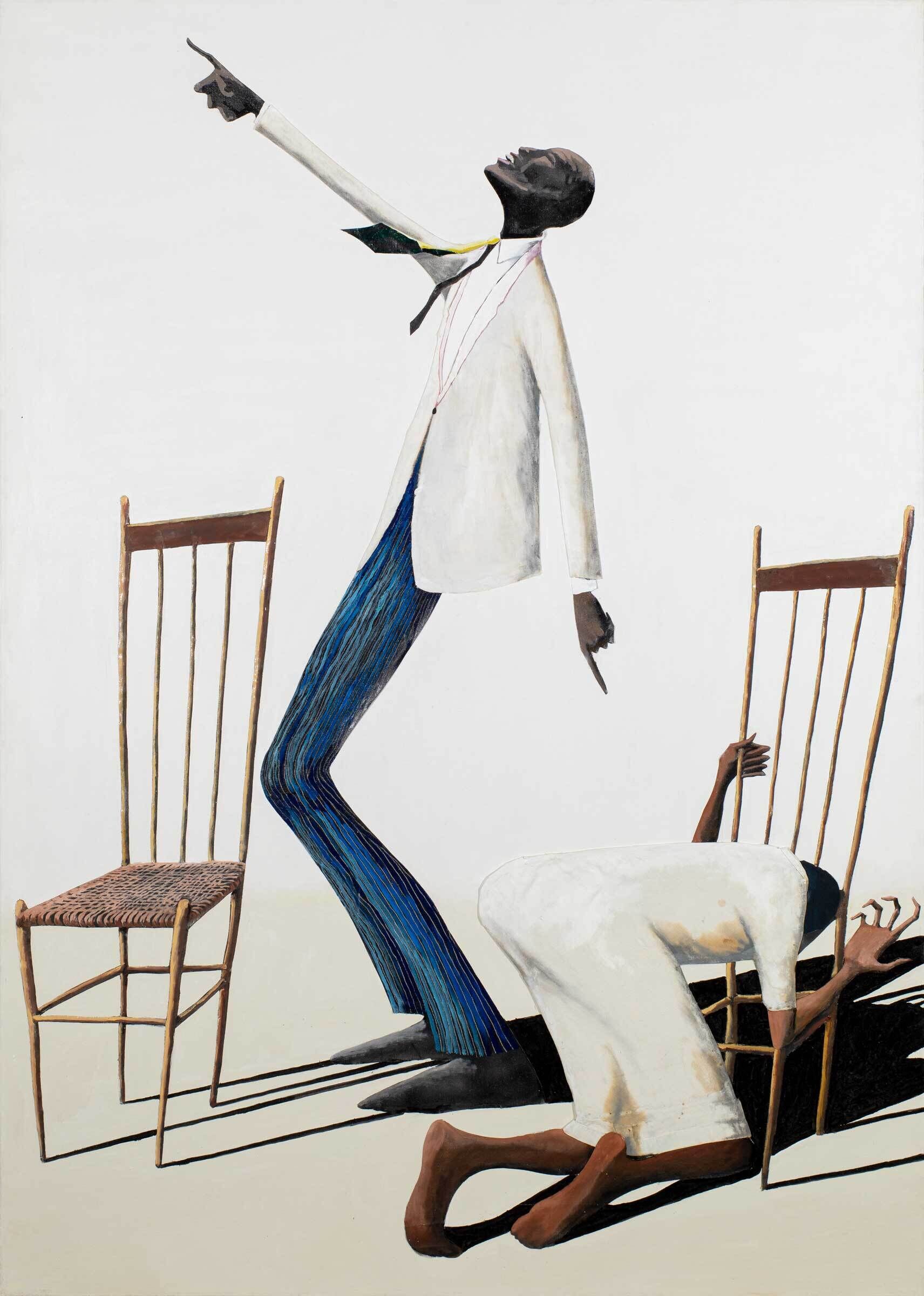Edges of Ailey | Art & Artists
Sept 25, 2024–Feb 9, 2025
Edges of Ailey | Art & Artists
Black Spirituality
2
Reflecting upon the importance of the divine in his choreography, Alvin Ailey remarked, “My roots are also in the Gospel church, the Gospel churches of the South where I grew up. Holy blues, paeans to joy, anthems to the human spirit.” Most notably in his iconic Revelations (1960), Ailey drew upon his childhood experiences of Sunday services, spirituals, and baptism in rural Texas. Black churches, like the ones Ailey and his mother attended, have been foundational to Black social, political, and educational life in the United States.
Ailey’s interest in the ecstatic aspects of spiritual experience also went beyond the Black church of the American South. Like anthropologist and choreographer Katherine Dunham, who was a practitioner of Haitian vodou, he found special resonance in Brazilian candomblé, an African diasporic religion that combines spiritual influences from West Africa—including the Fon, Yoruba, and Bantu—with Roman Catholicism. The particular songs, devotional rituals, ways of moving, and distinct garb associated with candomblé and vodou exemplified endurance, imagination, and sociality in contrast to extreme subjugation.
Throughout his life, Ailey was inspired by the breadth and diversity of Black spiritual practices. If faith was a bedrock of belief in either freedom or salvation, fervor—or soulfulness—would be one proof of its existence. Ailey sought to re-create an outpouring of feeling, a sense of theatricality, and emphatic storytelling by informing the content of several dances he choreographed for his company, like Revelations (1960), Hermit Songs (1961), Mary Lou’s Mass (1971), and Hidden Rites (1973), and his engagements with theater and opera, such as Leonard Bernstein’s Mass (1971) and Four Saints in Three Acts (1973).
Artists
- Terry Adkins
- Alvin Ailey
- Emma Amos
- Benny Andrews
- Ellsworth Ausby
- Eldren Bailey
- Richmond Barthé
- Jean-Michel Basquiat
- Romare Bearden
- Kevin Beasley
- John Biggers
- Beverly Buchanan
- Elizabeth Catlett
- Karon Davis
- Roy DeCarava
- Beauford Delaney
- Thornton Dial
- Aaron Douglas
- Sam Doyle
- David Driskell
- David Driskell
- Robert Duncanson
- Melvin Edwards
- Rotimi Fani-Kayode
- Meta Vaux Warrick Fuller
- Charles Gaines
- Ellen Gallagher
- Theaster Gates
- Sam Gilliam
- David Hammons
- Lyle Ashton Harris
- Maren Hassinger
- Palmer Hayden
- Barkley L. Hendricks
- Geoffrey Holder
- Lonnie Holley
- Clementine Hunter
- Hector Hyppolite
- Wadsworth Jarrell
- Rashid Johnson
- William H. Johnson
- Loïs Mailoi Jones
- Jacob Lawrence
- Ralph Lemon
- Norman Lewis
- Samella Lewis
- Glenn Ligon
- James Little
- Antonio Lopez and Juan Ramos
- Mary Lovelace O'Neal
- AI Loving
- Kerry James Marshall
- Archibald John Motley, Jr.
- Thomas Nast
- Senga Nengudi
- John Outterbridge
- Joe Overstreet
- Jennifer Packer
- Gordon Parks
- Fon peoples
- Horace Pippin
- Noah Purifoy
- Martin Puryear
- Faith Ringgold
- Betye Saar
- Lorna Simpson
- Alma Thomas
- Blaise Tobia
- Bill Traylor
- Makers unknown
- Rubem Valentim
- James Van Der Zee
- Carl Van Vechten
- Kara Walker
- Paul Waters
- Carrie Mae Weems
- Charles White
- Kandis Williams
- Hale Aspacio Woodruff
- Lynette Yiadom-Boakye
- Purvis Young

